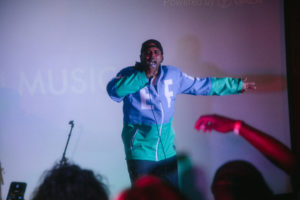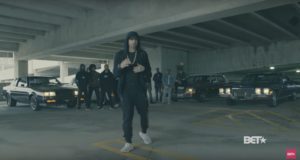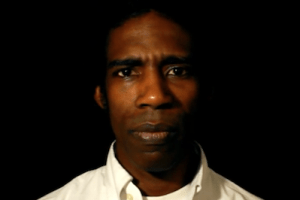Jabari Asim: Lyrics Rated M, for Murderous
Are rappers' ultra-violent rhymes a sign of lethal intent or just a cry against oppression?WASHINGTON — Rap lyrics stole much of the spotlight during the recent capital murder trial of Ronell Wilson, a 24-year-old Staten Island native also known as “Rated R.” Wilson stood accused of killing two New York undercover detectives, James V. Nemorin and Rodney J. Andrews, in March 2003.
Prosecutors argued that the scribbled lyrics found in Wilson’s pocket soon after the deaths of the officers were evidence of his guilt. But other evidence — which didn’t receive as much attention as the defendant’s half-baked rhymes — did more to persuade the jury. That evidence included eyewitness testimony, DNA findings, video and audio surveillance footage and the opinions of scientific experts. Wilson was found guilty of 10 crimes in all, several of them punishable by death. The death penalty phase of his trial begins Jan. 10.
Still, prosecutors and the media made much of Wilson’s lyrics, which make the Black Eyed Peas sound like Langston Hughes. A sample for your delectation: “Leave a 45 slugs in da back of ya head. Cause I’m gettin dat bread / aint’ goin stop to I’m dead.”
To prosecutors, the words were a confession, a revelatory window into the fevered mind of a coldblooded murderer. To me, they resembled a cut-rate rip-off of the Notorious B.I.G.’s 1994 hit “Ready to Die”: “As I grab the glock, put it to your headpiece / One in the chamber, the safety is off release / straight at your dome homes, I wanna see cabbage.”
The B.I.G. went on to rhyme “cabbage” with “brain damage” before announcing that, like Rated R, he was fully prepared to shuffle off this mortal coil.
The defense team was not allowed to place a rap expert on the stand. But such an expert might have pointed out that Rated R’s lyrics were not only predictable but derivative too.
The use of hip-hop lyrics in trials is not new, as George Washington University law professor Paul Butler and others have pointed out. Still, the courts remain somewhat baffled as to how to regard them. Are they straight-up autobiography or merely macho fantasies?
Two Live Crew’s obscenity trial in Florida in October 1990 may have been the first high-profile courtroom drama involving rap lyrics. In that case, Henry Louis Gates Jr., a well-known black scholar, testified that the trio’s lyrics were part of a lengthy tradition and not meant to be taken seriously. “It’s a way the black people could fight against the oppression of their white masters,” he said. “They would mock each other to release anger and tension.”
That explanation shed little light on how the group’s persistent, gleefully vulgar mockery of women amounted to resistance to white oppression. But that was not a question the mostly white jury needed to wrestle with. For their part, jurors expressed little difficulty with the Crew’s lyrics. “Those were their songs. They were doing their poetry in song,” said a 65-year-old juror who voted quickly for acquittal.
Her very charitable assessment will have to go unchallenged here, because it is almost impossible to refute without quoting from the lyrics… .
The stakes were starker and higher in Wilson’s trial. Ultimately, this was no showdown over naughty words or celebrations of strip-club hedonism but a murder case involving the deaths of two brave, hardworking family men. And the fascination with the killer’s lyrics threatened to overshadow all that.
Nemorin was 36 and a married father of three. Andrews was 34 and a divorced father of two. Shortly after New York police killed 23-year-old Sean Bell, an unarmed black man, in a hail of bullets, at least one rapper took to the airwaves to offer musical tribute to the victim’s tragically brief life. It takes nothing away from Bell to ask where all the rappers are now, and to wonder who will offer rhymes in memory of two brave police officers who also died way too young.
Jabari Asim’s e-mail address is asimj(at symbol)washpost.com.
Copyright 2006, The Washington Post Writers Group
Your support is crucial...As we navigate an uncertain 2025, with a new administration questioning press freedoms, the risks are clear: our ability to report freely is under threat.
Your tax-deductible donation enables us to dig deeper, delivering fearless investigative reporting and analysis that exposes the reality beneath the headlines — without compromise.
Now is the time to take action. Stand with our courageous journalists. Donate today to protect a free press, uphold democracy and uncover the stories that need to be told.





You need to be a supporter to comment.
There are currently no responses to this article.
Be the first to respond.